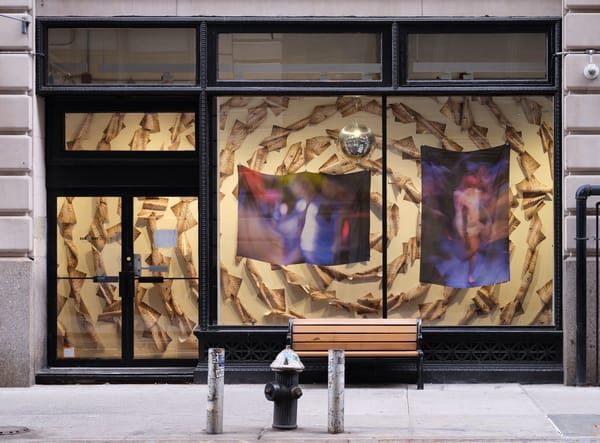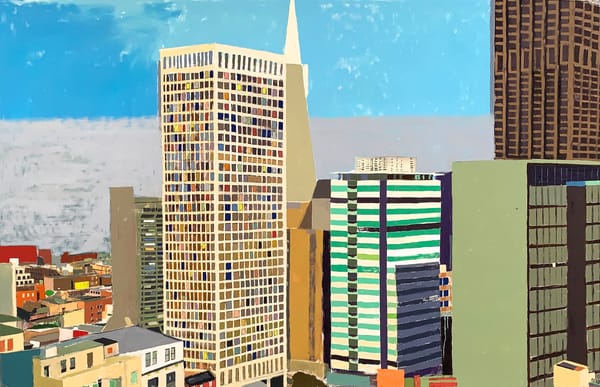Artist Breaks Her Sculpture in Protest at San Francisco Jewish Museum
Anti-Zionist Jewish artists withdrew their work from the Contemporary Jewish Museum earlier this month, demanding divestment from entities affiliated with Israel.

SAN FRANCISCO — Early on Thursday evening, June 6, right before the Contemporary Jewish Museum’s first-ever open-call exhibition opened to the public, dozens of anti-Zionist Jewish artists and supporters crowded the plaza in front of the institution in an action that included art-making, speeches, and the live destruction of a sculpture inside the museum.
The group's 15 organizers, known as California Jewish Artists for Palestine (CJAFP), include 11 who originally submitted their work to the museum’s open call with a plan to flood the exhibition with anti-Zionist art. While four of the group’s applicants were rejected, the seven who were accepted all chose to withdraw their work, citing disagreement over the context of the term “anti-Zionist” and a contract that artists felt left them with little to no autonomy over how their work was presented.
The night’s actions were sobered by a grim statistic: In the seven months since Hamas’s October 7 attack, Israel has killed more than 36,000 Palestinians in Gaza.
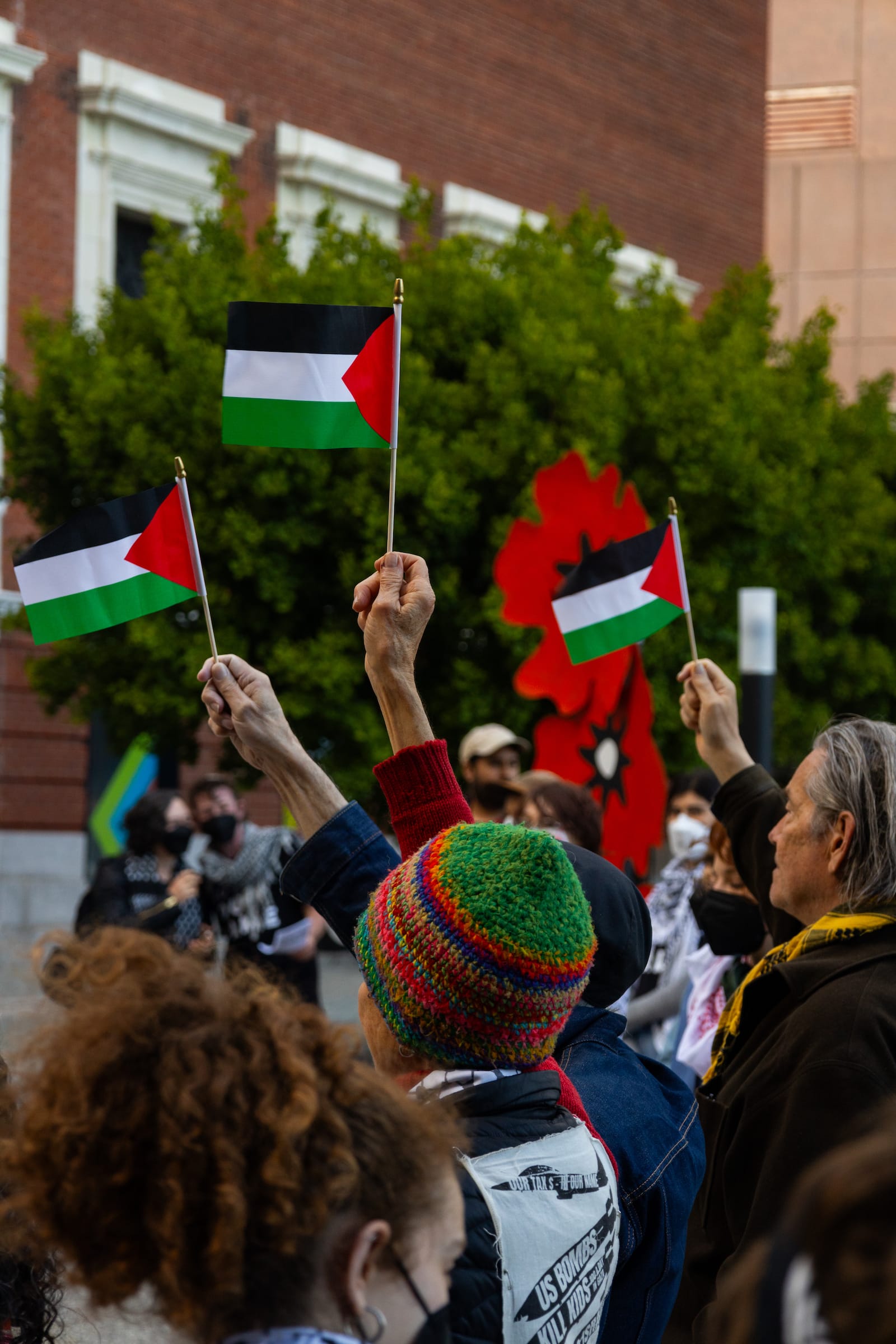
In response to the absence of the seven artists’ work, the Contemporary Jewish Museum left a large wall of the exhibition blank, with a placard explaining that to “authentically reflect the struggle for dialogue that is illustrated by the artists’ decisions to withdraw, the spaces where each of these works were planned to be displayed have been intentionally left empty.”
“It’s an empty gesture,” said artist and protest co-organizer Steph Kudisch of the blank wall. “It felt like a way of flipping the blame onto us to make us seem unreasonable.”
In a public statement released June 5, Executive Director Kerry King and board Chair Tom Kasten wrote that the institution maintained its stance that "to call for the swift return of all Israeli hostages and an end to the ongoing violence against Palestinian civilians is not a political stance but an essential moral position."
"As an institution, we have before, and will continue to present works that may be critical of Israel and show support for Palestinians," King had previously told two artists in an email. "However, what we cannot do is question the right of Israel to exist at all, implicitly or explicitly.”
A spokesperson for the Contemporary Jewish Museum told Hyperallergic that they supported the protest outside and would not move to end it if it remained peaceful, which it did.
By 6pm, the space was filled with tables offering printmaking, chalk drawing, live painting, and a brass band; speakers in the plaza took turns at a microphone, some with traditional Jewish chanting and singing. As dusk fell, museum-goers joined a line of over 80 people trickling inside. Metal detectors and security personnel scanned each person.
A visitor named Scott Berman stood watching the demonstration before joining his wife in line. He was impressed by what he saw as the coexistence of the art inside the museum and the protest outside.
“I think this is a good model,” Berman told Hyperallergic. “No one’s hating each other. I am Jewish; I have a strong connection to Israel. But there’s plenty of room to condemn what [Prime Minister] Netanyahu has done.”
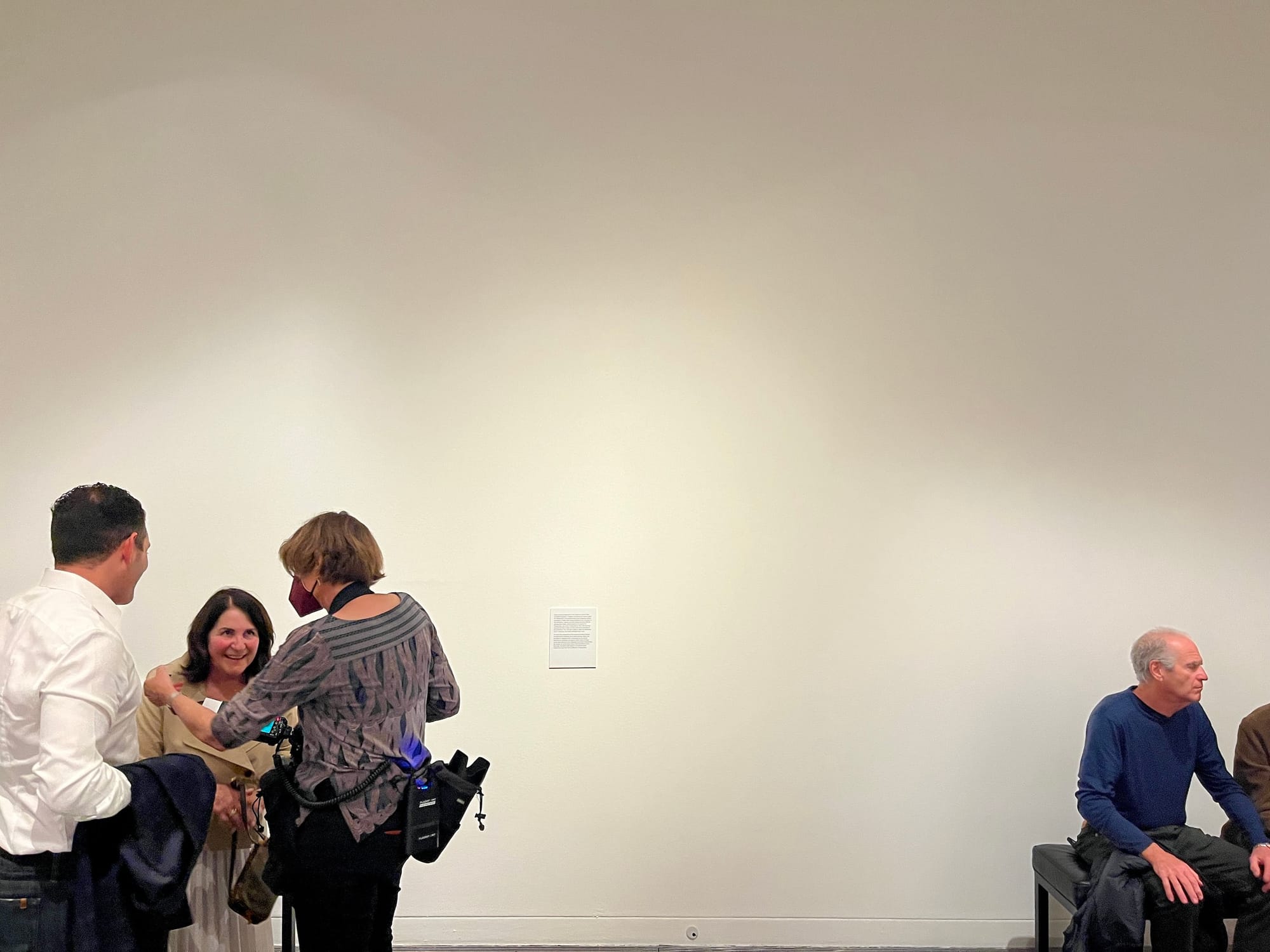
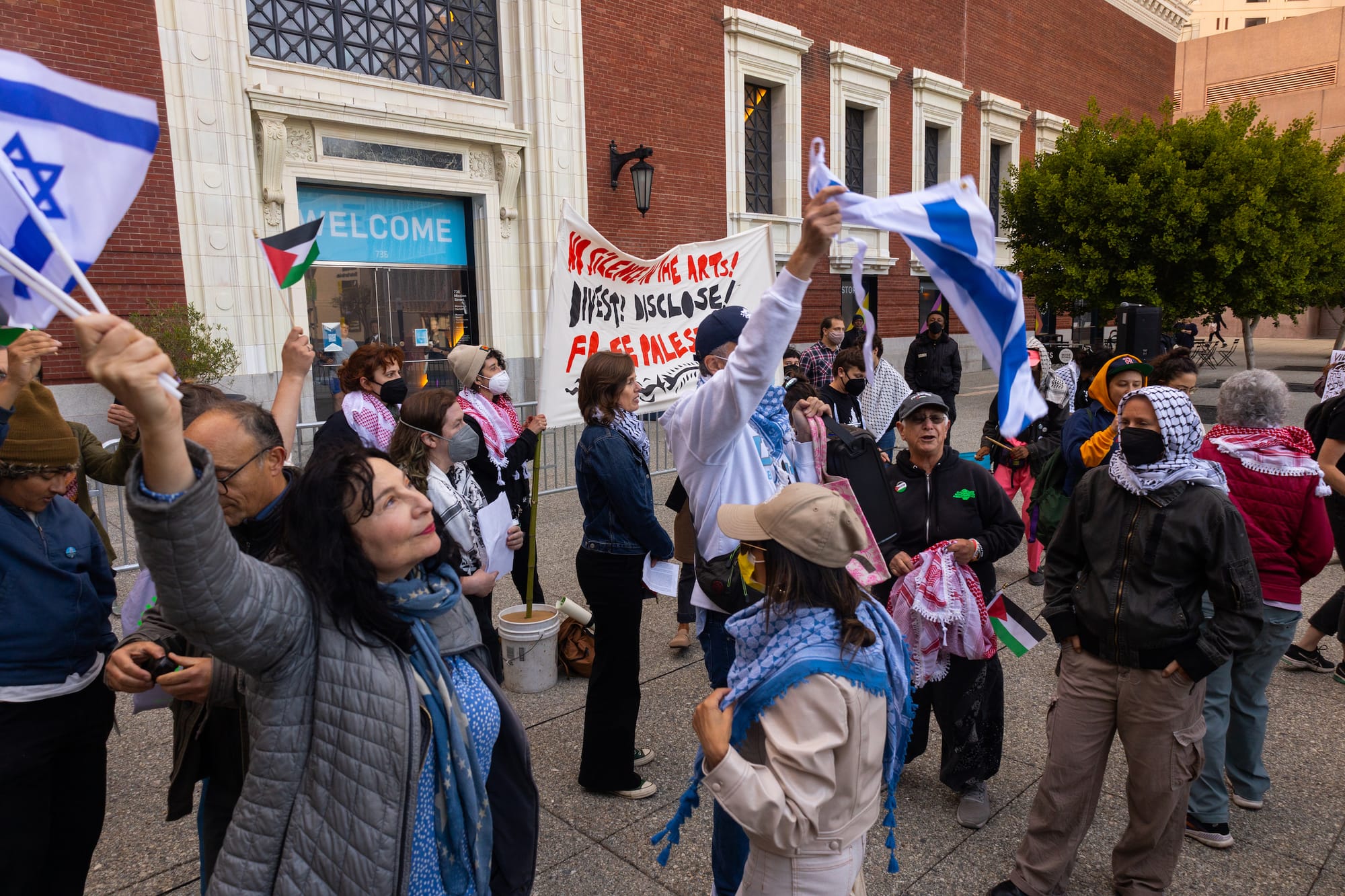
CJAFP organizer and Jewish artist Kate Laster was unfazed. "We owe Gaza our endurance," she told Hyperallergic. “This is urgent. There is a genocide happening in Palestine, and we need to normalize how we talk about these things.”
Open call artist Vanessa Thill emphasized that the group was there to protest the institution, not the show's participants. Artists were asked to submit to the open call around the theme of “connection,” and at first, Thill had felt encouraged by curator Heidi Rabin’s assurances that pro-Palestine views would be accepted.
But as the opening neared, Thill felt less and less supported in her anti-Zionist views. There was little dialogue among artists even after she reached out to the group to discuss Israel’s ongoing attacks on Gaza — and that dialogue didn’t seem to be encouraged.
Upstairs, around 7pm, as hundreds of attendees passed through, Thill stood next to her sculpture "Cleave-To (His Cheeks Were Beds of Spices)" (2023), consisting of two large crescent shapes cast in various spices, graphite, and fake blood. Thill read the traditional Kaddish prayer followed by the names of Palestinians killed by Israeli forces. She then read the names of Israeli hostages who were recently confirmed dead. And in a final act violating her museum’s artist contract, Thill broke off a piece of her sculpture and held the fragment to the crowd.
“The theme of the show is connection,” she said. “I felt we had to actually go outside [the museum] to do that.”
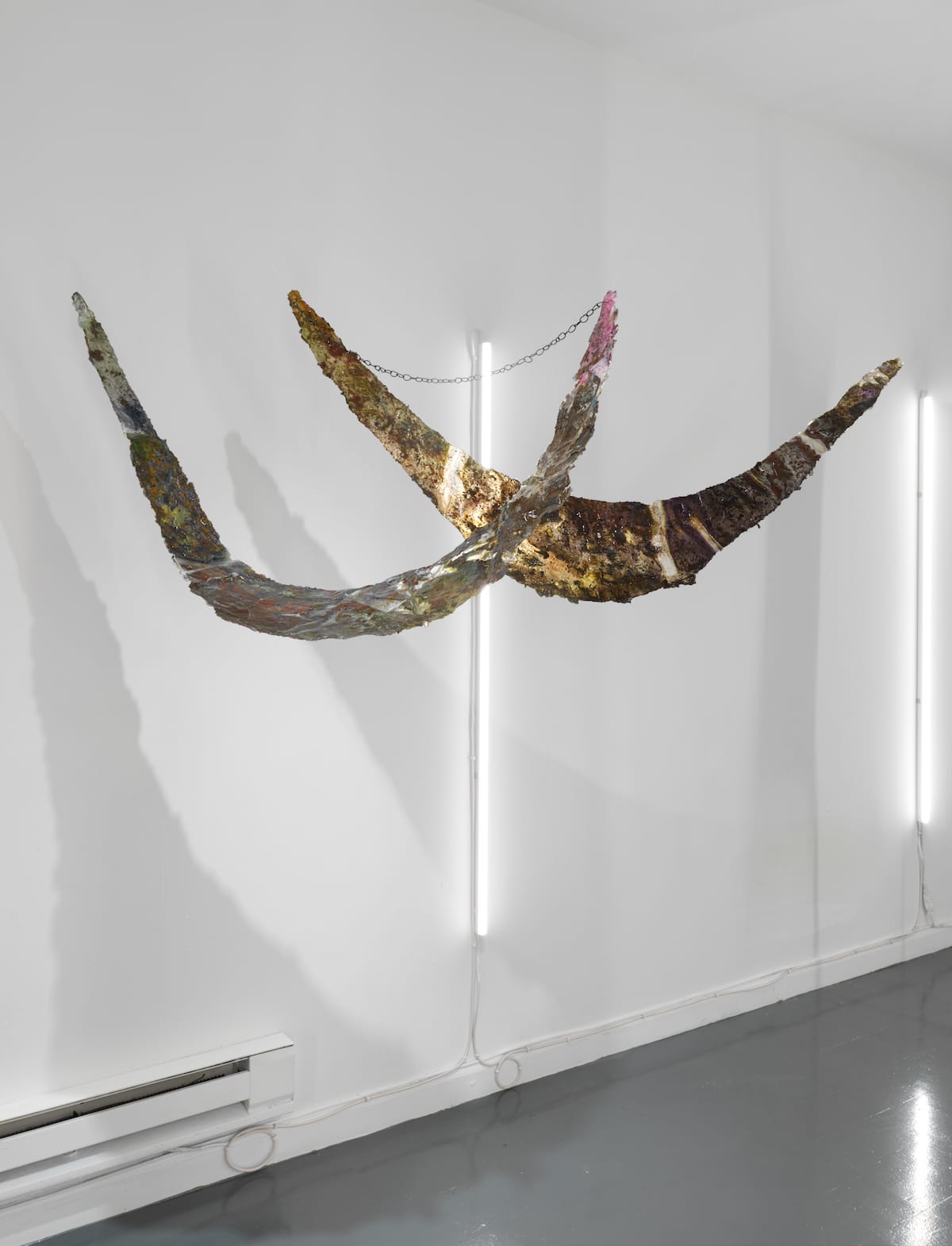

In March, before withdrawing, some of the artists said they were repeatedly asked by curators to define “Zionism” and “anti-Zionism,” with each definition returned back to them for edits and clarification.
“We realized the museum was not willing to engage with us in good faith,” said Kudisch.
A spokesperson told Hyperallergic that “the request was [meant] to define a term that is not universally understood or applied and might not be received in the way the artists intended.”
The group also sent a list of demands to the museum, which included applying public pressure to end the siege on Gaza, disclosing funding and investments, and divesting from entities affiliated with Israel.
“They sent an email back saying they could meet some of the demands, but not all. We asked them which ones specifically they could meet, and then they responded: zero.”
In a May 20 response to the artists, shared with Hyperallergic, the museum listed the conditions that could not be met: amendments of the contracts, which the artists agreed to in December; autonomy over wall texts and other exhibition materials; and institutional divestment from all funding linked to the Israeli government and military. Replying to the request for transparency around funding sources, the museum said its donors are named on its website; however, some top donors are listed as anonymous.
With regards to the artists’ demand for communication among the artists and with the curatorial team, the museum said its curators were available to speak to individual artists but that “contact between all artists in the exhibition prior to making a decision on whether or not to participate is not logistically possible for an exhibition of this size.”
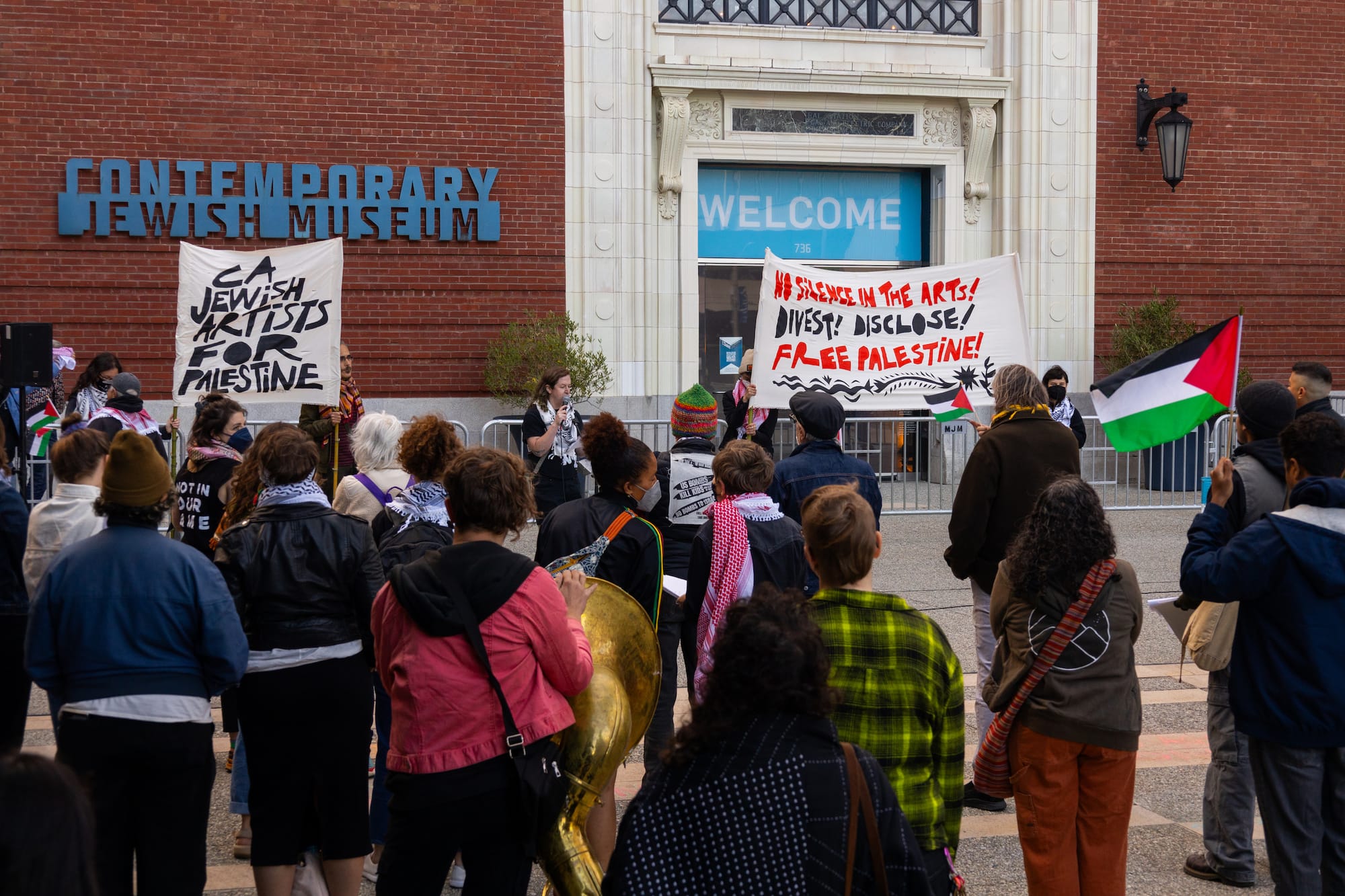
Kudisch and fellow organizer Kate Laster were both accepted into and withdrew from the open-call exhibition. Since their protest, she said, they’ve been met with a slew of harassment.
“It can veer into this weird antisemitism,” said Laster. “People will ask me, ‘Are you even Jewish? People have been very angry that we've taken away this myth that supports Zionism, which some people are unwilling or uncomfortable talking about.”
“I’ve been accused of being a ‘kapo,’” Kudisch said in a call with Hyperallergic the day before the demonstration, referring to a term used for Jewish people who collaborated with Nazis during the Holocaust.
For many, advocating for Palestine also means highlighting ideological and ethnic diversity within Judaism. “The main voices that have been uplifted in Judaism in America have been the White, mostly Ashkenazi Jewish voices,” said Jacob Li Rosenberg, who is Chinese and Jewish.
“Multiracial Jewish perspectives are still working to be platformed. Holding multiple identities is really important to include in this conversation especially,” he said.
Li Rosenberg applied to the California Jewish Open in March and was rejected. He had submitted a print with the words “Free Palestine” in Hebrew, layered over a poppy — a symbol of Palestine.
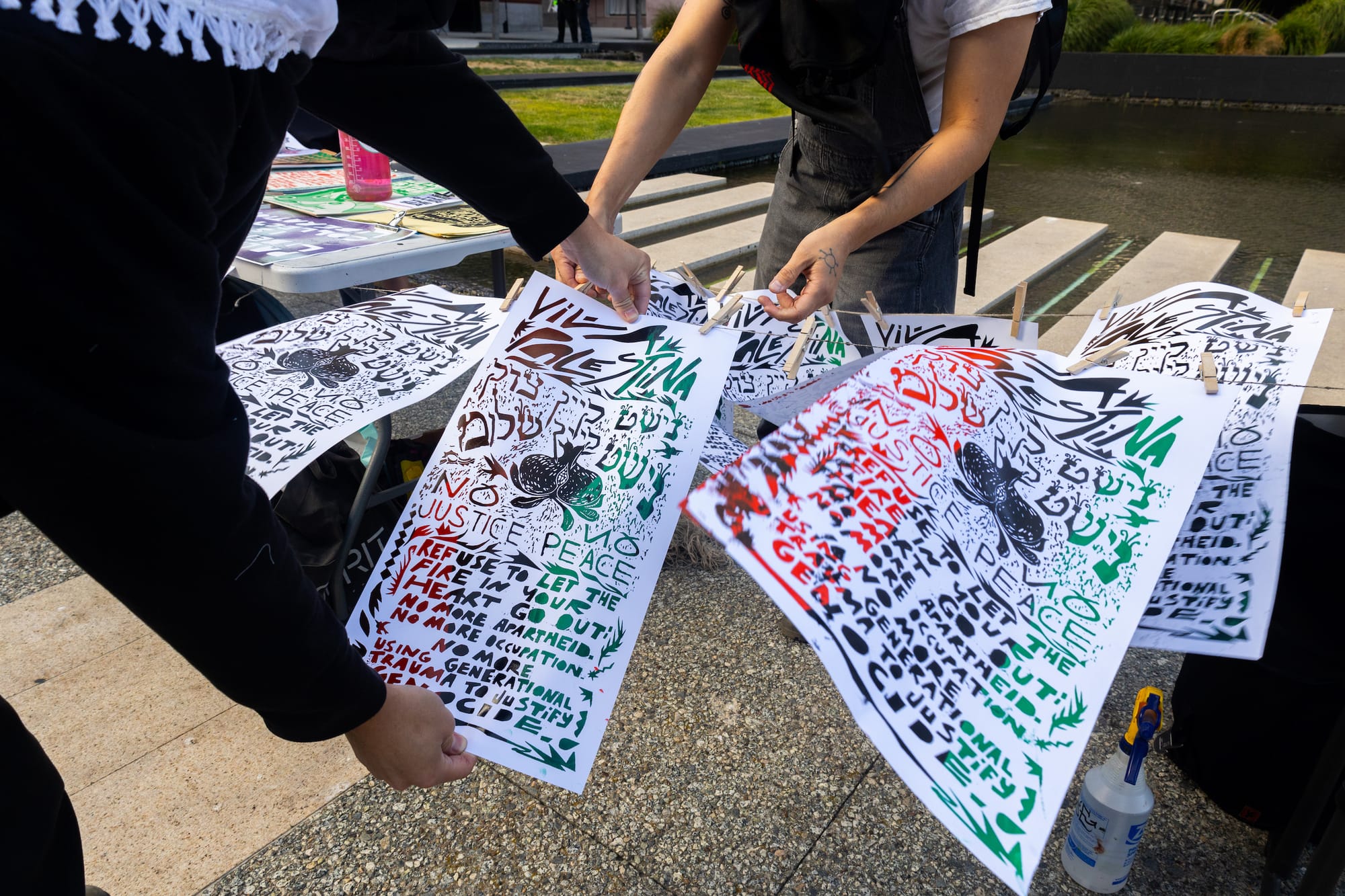
Upstairs, Marin resident Sam Vitaro sat on a bench in front of the blank wall. “I think this is a good compromise,” he said, gesturing behind him. His friend next to him was more skeptical. “I read the statement and just was confused. What are they saying?”
Paintings by Vitaro’s wife, artist Stela Mandel, are positioned at the end of the blank wall. One piece depicted a rally from early in 2023 criticizing Israeli Prime Minister Netanyahu’s political reign. The other showed a protest calling for the return of Israeli hostages. Next to the 20-plus feet of blank wall, the mostly blue and white pieces stood out.
“The whole idea of Jewish anti-Zionism is shocking to me,” said Mandel, whose family survived the Holocaust. She pointed to the expanse of wall beside her. “[But] I do feel that it is too bad people had something to say here, and are not here to say it.”
For the anti-Zionist organizers, that’s exactly the point. “This is de-colonial organizing,” said Thill.
“Just like all the college students asking their institutions to radically restructure. If our major institutions can’t exist without Zionist funding, then what does that mean? If they’re not willing, then do we even need them? Maybe they need to dissolve.”
By 8:30pm, crews unaffiliated with the museum were hosing down the chalk art in the plaza. “I don’t think it's graffiti,” said one worker. He pointed up to the Four Seasons apartments looming on the east side of the square: “But they do.”

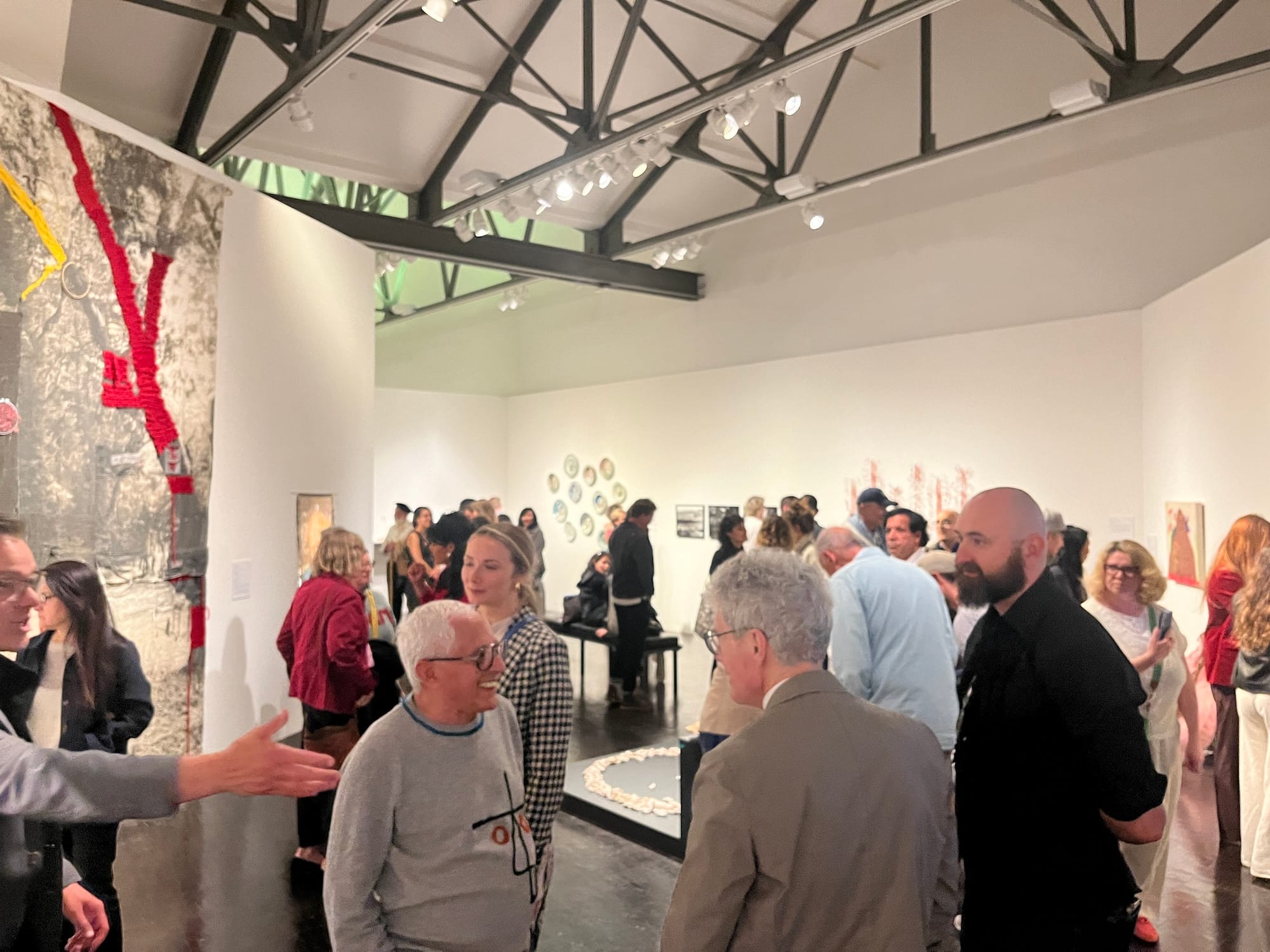
Editor’s note 6/7/24 6:15pm EST: A previous version of this article stated that some artists were asked to provide definitions of the word “Zionism” with a deadline that was in the middle of the workday. This is incorrect and the article has been edited. The text has also been updated with quotes from the museum’s May 20 response to the artists’ demands.


